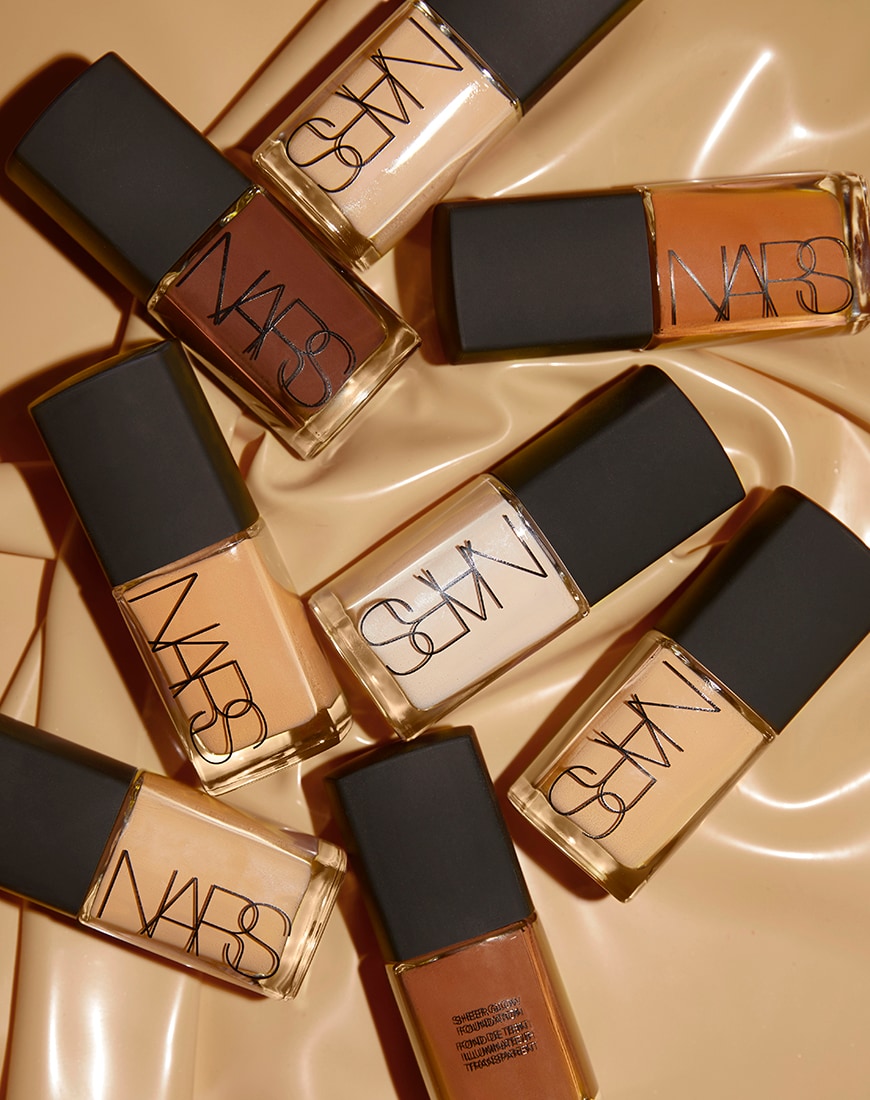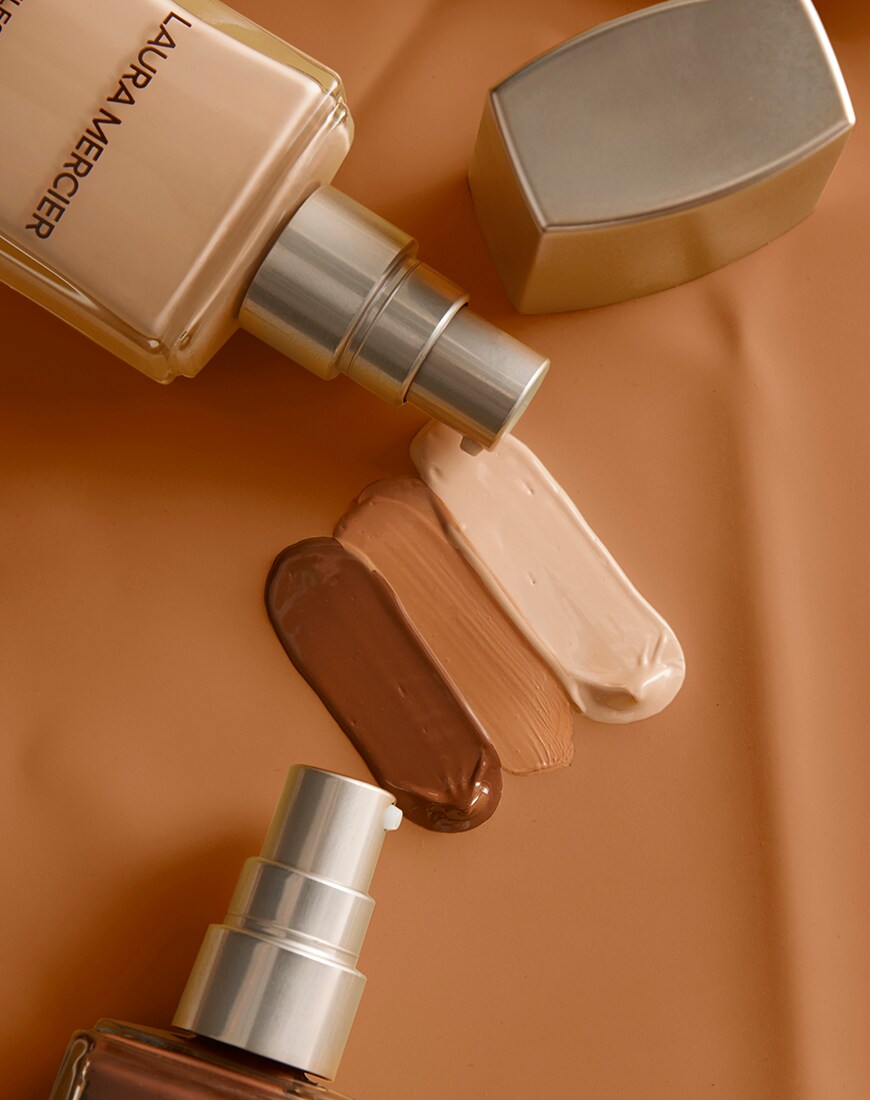STYLE. GROOMING. INSPIRATION. ADVICE.
your browser is not supported
To use ASOS, we recommend using the latest versions of Chrome, Firefox, Safari or Edge
GROOMING TIPS
YOUR FOUNDATION COURSE
By Amelia Bell, 13 February 2019
If you're considering branching out into the world of foundation – whether to even up your complexion, cover spots or add a little glow – first off, it'll pay dividends to know your stuff. From tinted moisturisers combined with CC creams, to liquid formulas versus loose-powder, there are no easy A*s on this course. Luckily, we've spoken to leading makeup artist Gina Blondell to reveal some insider tips and tricks when it comes to application, tools, formulas and shades – everything you need to help you find the foundation that’s right for your face.

What's your advice on finding the right shade of foundation?
‘Firstly, always try and swatch (test a little of the product) in daylight from the centre of your face to the jawline. You can also apply a stripe directly onto your neck to ensure the colour really matches the rest of your skin. Look at your undertones to guide you and always swatch a few different colours as they might dry differently.’
What's your undertone and how do you find it?
‘So, the best place to start is by looking at your veins. If your veins appear more purple, your undertone is likely to be red/pink, whereas, if veins appear more green, then you’re more of a yellow/olive undertone.’
‘Firstly, always try and swatch (test a little of the product) in daylight from the centre of your face to the jawline. You can also apply a stripe directly onto your neck to ensure the colour really matches the rest of your skin. Look at your undertones to guide you and always swatch a few different colours as they might dry differently.’
What's your undertone and how do you find it?
‘So, the best place to start is by looking at your veins. If your veins appear more purple, your undertone is likely to be red/pink, whereas, if veins appear more green, then you’re more of a yellow/olive undertone.’

Which formulation should I use?
‘When deciding on a formulation – compact, loose-powder, liquid, and so on – try to focus on your main skin query to determine what kind of coverage to use. If you’re prone to oily skin, stick to a matte foundation, or even a compact powder for buildable coverage. Dry skin? You’ll be best-suited to hydrating liquid and cream formula foundations. The denser the formula the higher the coverage, so, a loose powder will give you a more lightweight finish.’
Top tips on applying foundation?
‘Start in the centre of your face and work outwards, as your T-zone is generally the area to pay most attention to. You can apply using a flat-head brush in downward strokes or a buffing brush in circular motions for a smooth finish. To avoid creasing under the eyes? Try not to go right up to the lash line and use a setting powder post-foundation.’
‘When deciding on a formulation – compact, loose-powder, liquid, and so on – try to focus on your main skin query to determine what kind of coverage to use. If you’re prone to oily skin, stick to a matte foundation, or even a compact powder for buildable coverage. Dry skin? You’ll be best-suited to hydrating liquid and cream formula foundations. The denser the formula the higher the coverage, so, a loose powder will give you a more lightweight finish.’
Top tips on applying foundation?
‘Start in the centre of your face and work outwards, as your T-zone is generally the area to pay most attention to. You can apply using a flat-head brush in downward strokes or a buffing brush in circular motions for a smooth finish. To avoid creasing under the eyes? Try not to go right up to the lash line and use a setting powder post-foundation.’

Pictures: ASOS
Makeup tools: which one’s for me?
‘Using a sponge will give a denser application, but more cushion-like when bounced on to the skin (this is great for acne prone or very dry skin). You could also try a flat-head brush, which gives targeted application and is great for layering fine product, or a buffing brush, which has a softer finish and is ideal for blending.’
What are your tips to make your foundation stay on throughout the day?
‘Primers are great for ensuring your makeup stays on, and you can also use a setting powder or spray to really seal the deal.’
How should you prep before applying foundation?
‘Skincare is a no-brainer when it comes to a good base. To really supercharge your skin after cleansing, you could try a hydrating hyaluronic moisturiser and serum mist, or an exfoliator to leave your skin nice and smooth.’
‘Using a sponge will give a denser application, but more cushion-like when bounced on to the skin (this is great for acne prone or very dry skin). You could also try a flat-head brush, which gives targeted application and is great for layering fine product, or a buffing brush, which has a softer finish and is ideal for blending.’
What are your tips to make your foundation stay on throughout the day?
‘Primers are great for ensuring your makeup stays on, and you can also use a setting powder or spray to really seal the deal.’
How should you prep before applying foundation?
‘Skincare is a no-brainer when it comes to a good base. To really supercharge your skin after cleansing, you could try a hydrating hyaluronic moisturiser and serum mist, or an exfoliator to leave your skin nice and smooth.’

